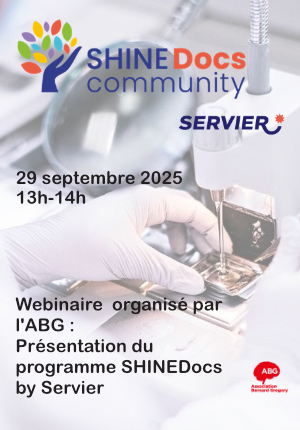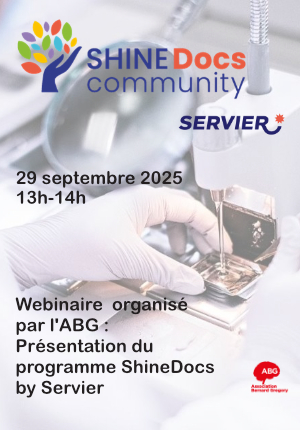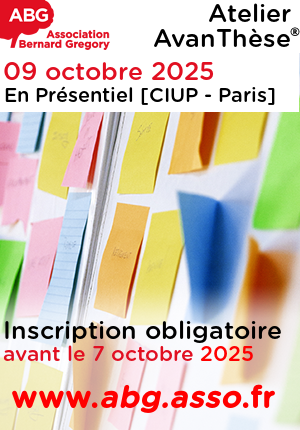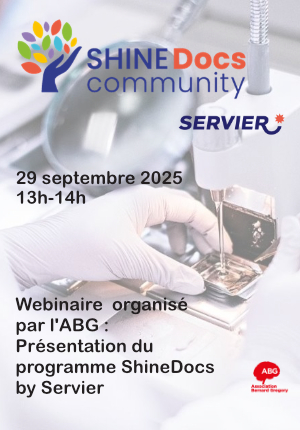Développement de réseaux interpénétrés de polymères à l’interface air-eau
| ABG-133562 | Master internship | 6 months | gratification service public |
| 2025-09-25 |
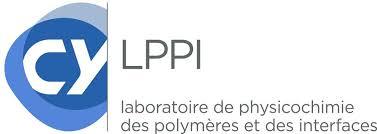
- Materials science
Employer organisation
Website :
Situé sur le site de Neuville-sur-Oise, le Laboratoire de Physicochimie des Polymères et des Interfaces (LPPI) regroupe une vingtaine d’enseignants-chercheurs de diverses spécialités scientifiques (polyméristes, électrochimistes, chimistes inorganiciens, physiciens des surfaces et interfaces,…), 5 membres permanents administratifs et techniques et une trentaine de membres non-permanents (post-doctorants, doctorants, …).
Fort de cette pluridisciplinarité, le LPPI développe des thématiques de recherche concernant les matériaux polymères à architecture contrôlée, les matériaux polymères conducteurs ioniques et les matériaux (macro)moléculaires semi-conducteurs et conducteurs électroniques et leur modélisation.
Located on the Neuville-sur-Oise campus, the Laboratory of Physicochemistry of Polymers and Interfaces (LPPI) brings together around twenty faculty members from diverse scientific backgrounds (polymer scientists, electrochemists, inorganic chemists, surface and interface physicists, etc.), five permanent administrative and technical staff, and about thirty non-permanent members (postdoctoral researchers, PhD students, etc.).
Thanks to this multidisciplinary expertise, the LPPI conducts research on controlled-architecture polymer materials, ionically conductive polymer materials, and (macro)molecular semiconducting and electronically conducting materials, as well as their modeling.
Description
Ce sujet de stage de Master 2 a pour objectif d’étudier la formation de réseaux de polymères à l’interface air-eau. Ces réseaux sont obtenus après réticulation des polymères initialement présents à la surface de l’eau sous forme de films ultraminces dits de Langmuir. Dans le cas d’un film de Langmuir formé par un seul polymère, la réticulation conduit à la formation d’un réseau simple de polymère. En revanche, dans le cas d’un mélange de deux polymères à l’interface air-eau, ces derniers peuvent être réticulés l’un en présence de l’autre via deux voies différentes pour obtenir des réseaux interpénétrés de polymères (RIPs). La formation de ces architectures permet de limiter significativement la séparation de phase et de combiner les propriétés des deux polymères. Ainsi, nous proposons d’étudier la synthèse de RIPs 2D à l’interface air-eau. Les films ultra-minces de polymères obtenus pouvant être transférés dans un second temps sur un support solide choisi, cette méthode permet d’obtenir des revêtements de surface polymères dont les propriétés chimiques sont ajustables. Ce travail se situe ainsi à l’intersection de la chimie des polymères, de la science des interfaces et des matériaux avancés, ouvrant des perspectives pour la mise au point de surfaces intelligentes et multifonctionnelles.
Les polymères choisis seront réticulés soit par voie radicalaire sous irradiation UV, soit par l’intermédiaire d’un agent réticulant [1,2]. Des caractérisations in situ à l’interface air-eau seront effectuées en utilisant des isothermes de compression puis des observations de la morphologie par des techniques de microscopies spécifiques [3,4]. Pour cela, plusieurs couples de polymères sélectionnés notamment pour leur caractère hydrophobe différent seront considérés sur la base d’une étude approfondie des diagrammes de phase pression-composition déjà réalisée au laboratoire. Ces diagrammes de phase mettent en évidence les régions de miscibilité et de séparation de phase et permettent ainsi d’identifier les conditions expérimentales les plus adaptées pour la synthèse de RIPs 2D homogènes. La combinaison des différentes caractérisations des RIPs 2D permettra de mieux comprendre l’influence des réactions de réticulation des polymères à l’interface air-eau sur les propriétés de mélange de polymères.
Références :
- Vaillard, A.-S.; El Haitami, A.; Dreier, L. B.; Backus, E. H. G.; Cantin, S. Langmuir 2020, 36, 862–871.
- Haroun, F.; El Haitami, A.; Ober, P.; Backus, E. H. G.; Cantin, S. Langmuir 2020, 36, 9142-9152.
- El Haitami, A. ; Goldmann, M.; Cousin, F.; Dosseh, G.; Cantin, S. Langmuir 2015, 31, 6395–6403.
- Vaillard, A.-S.; Haitami, A. E.; Dreier, L. B.; Fontaine, P.; Cousin, F.; Gutfreund, P.; Goldmann, M.; Backus, E. H. G.; Cantin, S. Langmuir 2022, 38, 2538 – 2549
This Master 2 internship aims to study the formation of polymer networks at the air–water interface. These networks are obtained after crosslinking polymers initially spread on the water surface as ultrathin films, known as Langmuir films. In the case of a Langmuir film formed from a single polymer, crosslinking results in the formation of a simple polymer network. However, when two polymers are mixed at the air–water interface, they can be crosslinked in each other’s presence through two different pathways, leading to the formation of interpenetrating polymer networks (IPNs). The construction of such architectures significantly reduces phase separation while combining the properties of both polymers.
We therefore propose to study the synthesis of 2D IPNs at the air–water interface. The resulting ultrathin polymer films can subsequently be transferred onto a solid substrate, enabling the preparation of polymer surface coatings with tunable chemical properties. This work lies at the crossroads of polymer chemistry, interface science, and advanced materials, and opens promising perspectives for the design of intelligent, multifunctional surfaces.
The chosen polymers will be crosslinked either by radical reactions under UV irradiation or using a crosslinking agent [1,2]. In situ characterizations at the air–water interface will be performed using compression isotherms, followed by morphological observations with specific microscopy techniques [3,4]. Several polymer pairs, selected particularly for their contrasting hydrophobic character, will be investigated based on an in-depth study of pressure–composition phase diagrams previously carried out in the laboratory. These phase diagrams highlight miscibility and phase separation regions and thus allow us to identify the most suitable experimental conditions for the synthesis of homogeneous 2D IPNs. The combination of different characterizations of 2D IPNs will provide a better understanding of how crosslinking reactions at the air–water interface influence polymer blending properties.
Références :
[1] Vaillard, A.-S.; El Haitami, A.; Dreier, L. B.; Backus, E. H. G.; Cantin, S. Langmuir 2020, 36, 862–871.
[2] Haroun, F.; El Haitami, A.; Ober, P.; Backus, E. H. G.; Cantin, S. Langmuir 2020, 36, 9142-9152.
[3] El Haitami, A. ; Goldmann, M.; Cousin, F.; Dosseh, G.; Cantin, S. Langmuir 2015, 31, 6395–6403.
[4] Vaillard, A.-S.; Haitami, A. E.; Dreier, L. B.; Fontaine, P.; Cousin, F.; Gutfreund, P.; Goldmann, M.; Backus,
E. H. G.; Cantin, S. Langmuir 2022, 38, 2538 – 2549.
Profile
Master en physique et/ou chimie. Une formation ou expérience dans le domaine des matériaux polymère sera appréciée.
Master’s degree in physics and/or chemistry. Experience in the field of polymer materials will be appreciated.
Starting date
Vous avez déjà un compte ?
Nouvel utilisateur ?
Get ABG’s monthly newsletters including news, job offers, grants & fellowships and a selection of relevant events…
Discover our members
 PhDOOC
PhDOOC  MabDesign
MabDesign  Ifremer
Ifremer  Institut Sup'biotech de Paris
Institut Sup'biotech de Paris  Nokia Bell Labs France
Nokia Bell Labs France 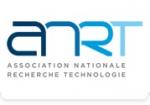 ANRT
ANRT  Laboratoire National de Métrologie et d'Essais - LNE
Laboratoire National de Métrologie et d'Essais - LNE 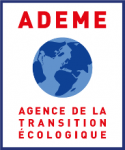 ADEME
ADEME  Aérocentre, Pôle d'excellence régional
Aérocentre, Pôle d'excellence régional  ONERA - The French Aerospace Lab
ONERA - The French Aerospace Lab  Groupe AFNOR - Association française de normalisation
Groupe AFNOR - Association française de normalisation  CASDEN
CASDEN  MabDesign
MabDesign  Généthon
Généthon  TotalEnergies
TotalEnergies  Tecknowmetrix
Tecknowmetrix  CESI
CESI  SUEZ
SUEZ  ASNR - Autorité de sûreté nucléaire et de radioprotection - Siège
ASNR - Autorité de sûreté nucléaire et de radioprotection - Siège

